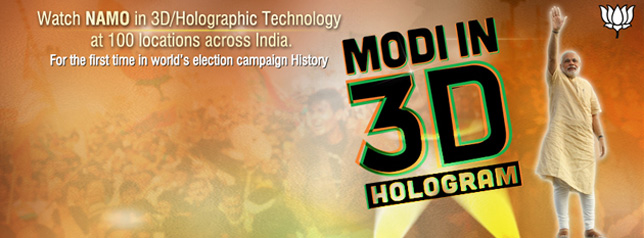How Big Data & Analytics Proved To Be A Major Catalyst Behind Mr. Modi's Success
Published by BIWHIZ team

Ever since the new government came in power, news outlets started debating as to why Congress lost so heavily to the (BJP) or rather their star player Mr. Narendra Modi. However, it is unanimously agreed upon that it was Modi's combination of technologies - big data analytics and social media that ensured his PM candidature. Voters' emotions, reactions, sentiments and concerns vary with states and constituencies. It is this difference that has been scrutinized and put under a microscope to evaluate the right move by the winning party this year.
What makes Modi's use of big data so impressive is that it was both relatively new to Indian politics, and wrought with unique challenges. The sheer volume of data of India's voting population was perhaps the largest obstacle. The second was the variety of data - For example: India's voter rolls in 12 different languages etc. and then the veracity of the information combined with name overlapping only further complicate the process.
Arvind Gupta, the IT & analytics man responsible for Mr. Modi's 3.67 million followers on Twitter, 12 million likes on Facebook and the party's 68 million page views on Google Plus, had most aptly used the big data analytics. "We have developed our own customized digital tools based on both commissioned and open source data that puts us in direct touch with voters," said Arvind Gupta.
Through data analysis BJP reworked advertisements and created detailed models for voter engagement in swing states as well as gender and minority voter clusters to increase the effectiveness of campaign on a targeted group.
For example: The moment you visited a BJP website, a cookie (a small bit of software) gets planted on your computer. This cookie now would sit and keeps tracking your browsing pattern even after you have shut down the website and moved ahead. This works in sync with an algorithm that builds a demographic profile according to your browsing pattern. Now for instance, if you move out of the BJP website and visited a website for bikes followed by a search on jobs, the algorithm will make the inference that you are a young male from a particular constituency, say Chandigarh, who is currently on a job hunt. What happens next is when you visit a job searching portal like Naukri.com, this system pops up a contextual ad for you like "jobs in Chandigarh". The BJP banner which is just below the results will tell you "There are no Jobs in Chandigarh. India deserves better". Thus, on the basis of your digital profile stored on the BJP servers, a customized message is sent your way via sms or email everytime contact information and digital profile ties the knot in the backend.
A cornerstone of the Modi's campaign was the technical innovations that his team was able to roll out to multiply his outreach. Quick to recognise the power of the internet and mobile phones in electioneering, Modi surrounded himself with tech-savvy supporters early to develop a comprehensive information dissemination system. His entourage had an excellent selection of representatives, who proved to be the critical elements of life on the campaign trail & in his success. For example, Om Prakash Chandel, his personal assistant who used to travel with him, collected key quotes and passed them on to Modi so that he can respond in his next speech.
It is said that Modi owed atleast 50 % of his public meetings to precise planning and constant monitoring of resources by Modi's staff, which had enrolled people like Akhil Handa (former banker who now works with the Modi-backed NGO Citizens for Accountable Governance (CAG).), a key campaign manager Prashant Kishor, Ankita Dwivedi ex Google employee, Marshal and other 1000's of volunteers most of whom were from IIT's & IIM's.
It would not be wrong to say that the credit for his win majorly goes to the customized campaigns across constituencies. From focusing on developing brand India by concentrating on on 5Ts - talent, tradition, tourism, trade and technology, to customized campaigns to woo the local vote bank, Modi literally did not leave any stone unturned.
For example, During their campaign in Bihar, BJP went into alliance with LJP & the RSLP. The party had adopted twin strategies for the elections there: Modi talks development and growth and the party units work out all caste and communal equations. This was primarily done on the basis of the huge voter data collected by the party analytics and IT team. Similarly, in Delhi and other metro states the primary vote bank was the young generation who had by now gotten fed up with the existing government in charge. In another instance of the campaign's flexibility; he increased the frequency of his 3D appearances in Bihar from once in three days to every evening.
Tactics like these - both online and offline analytics and marketing - were the backbone to Modi's success. He lead the charge with both social media and the analysis of publicly available data. With big data analytics, refining the historic unstructured data and strategizing the next campaign move had become possible for him and his party. The 2014 election where more than 930,000 polling booths and 1.7 million voting machines were used, big data analytics played the role of a catalyst in deciding the vote results.
Carrying forward his reliance on data analytics along with BJP manifesto, which draws ambitious goals for the overall Information Technology (IT) industry, the government has planned to set up an institute of Big Data and Analytics for studying the impact of Big Data across sectors for predictive science.
--BIWHIZ team


Comments
comments powered by Disqus